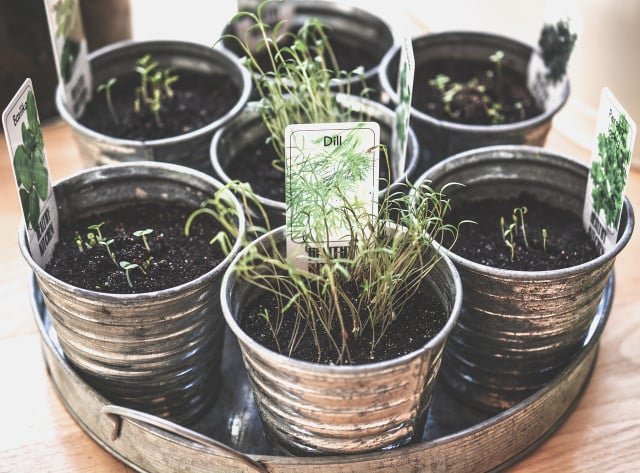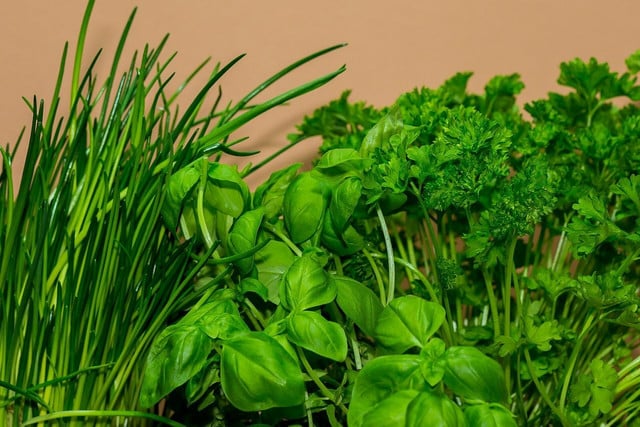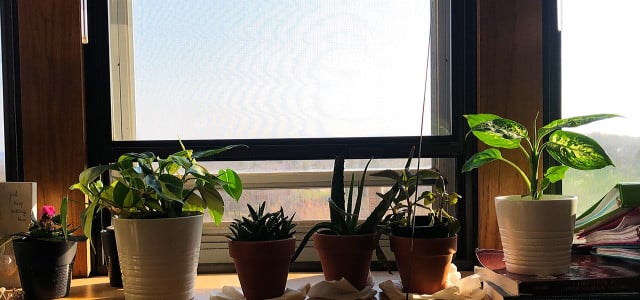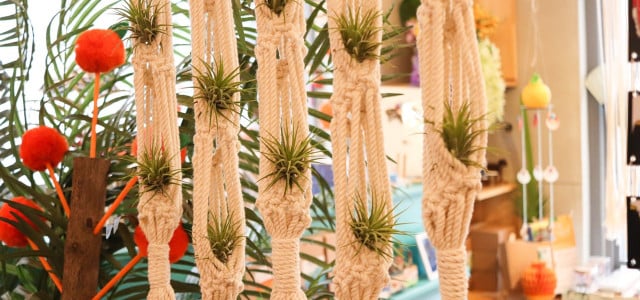Planting in an apartment is not difficult at all. In this article we’ll give you some easy tips on how to garden in your apartment sustainably.
Do you have to give up on planting and growing your own herbs and vegetables because you moved into an apartment? Well, not necessarily! In this article we’ll show you how to start gardening in your apartment share some tricks for sustainable plant care that will help your plants thrive.
How to Start Planting in Your Apartment

(Foto: CC0 / Pixabay / monicore)
Plants bring a lot of life to any indoor – and outdoor – space. Moving into an apartment has some drawbacks if you are into plants and harvesting, but there are a lot of gardening practices that you can follow if you live in an apartment. The lack of outdoor space is a reality that can’t be changed, but windowsills and spaces with lots of natural light are ideal for apartment gardening. So how do you start?
- Reserve sunny spots for your plants: No matter if you are regrowing a vegetable or planting a new herb, they will need lots of sun during the first few months. Take advantage of the sunniest spots (balconies, rooftops or indirect light via windowsills and well-lit areas) in your apartment and reserve them for your apartment gardening! Some plants grow very well in the shadow and don’t do well with too much sunlight. Find out if you have or want to have plants like this and place them in the darker spots of your apartment.
- Pick the right soil: Before you plant, pick a good organic soil. Remember that not any soil can be used for any plant. Indoor plants in pots actually need a well-draining potting mix. Also read up on certain requirements each plant might have for soil — some like sandy soil, others only do well in certain potting mixes.
- Fertilize: Once you grow a plant in a pot, it will eventually finish up all the nutrients from the soil. For this reason, it might be helpful to use compost twice a month; this will keep the soil full of nutrients for your plants to thrive. You even have the option to compost in your apartment yourself. Alternatively, buy a suitable organic fertilizer to help your apartment garden flourish. Make sure to read up on whether the combination of plant and soil can actually profit from fertilzer. Too much fertilizer at the wrong times will harm your plant!
- Give your plants enough water: Plants in containers need a lot of water, often multiple times a day. So choose a spot for your container garden that has easy access to a water supply. Carrying watering cans can get tedious, especially if you have several containers to keep watered. If it works for your setup, consider purchasing a hose that can be attached to a sink faucet. It’s handy when you need it, and it coils away when you don’t. We recommend doing some research on the amount of water that each of your new plants needs and adjust your watering accordingly.
- Be careful with the wind: If you are gardening on a rooftop or a balcony, be careful with the amount of wind your plants are getting. Herbs and other small plants will not resist heavy winds, so you can either grow them indoors or find a way to protect them from strong wind if you have them outdoors.
- Pick the right pot: It is very important that you pick a pot with drainage holes! Your plants can die if you overwater them, they can get root rot or even moldy soil. By having a good drainage system, your plants will simply absorb the amount of water they truly need.
- Find the right surface: Containers full of soil are heavy to begin with, and once they are saturated with water, their weight can triple. Make sure your apartment garden location can handle the weight. Window boxes will need to be secured to the windowsill. If you’re gardening on a balcony or rooftop, check with your landlord or building board about weight restrictions.
- Humidity: If you are growing your plants on an indoor windowsill, you might need to provide some extra humidity, especially when the heat is on. Spritzing the plants with a fine mist can help, or you can place the plants on a tray of water.
Gardening in Your Apartment: 6 Sustainable Tips



(Foto: CC0 / Pixabay / maxmann)
Planting in your apartment is fun, simple and rewarding. Sometimes apartment gardening is even easier than outdoor planting, because it’s not dependent on external factors such as rain or sunshine. With these six tips, your plants will be healthy and thriving:
- Make your own homemade plant food: Most plants need fertilizer to stay healthy. You can find fertilizers at your local gardening store, but they can include chemicals that aren’t as eco-friendly as you may think. Making your own plant food is often more sustainable and budget-friendly, and your plants will love it. Here’s how to upcycle egg shells or coffee grounds for your plants: Homemade Plant Food
- Water your plants with reused water: Plants and herbs will need lots of water to grow, especially at the beginning. One way to save water is reusing the water you used for something else in the kitchen. After boiling pasta, rice, vegetables, or potatoes, let that water cool down to room temperature and then use it to water your plants. You will be saving tap water and your plants will get some extra nutrients from the water you boiled food in.
- Use recycled pots: Do you know what upcycling is? Upcycling is a sustainable practice that consists of taking an item you were going to throw away and turning it into something valuable that you can use again. You can make your own pots from something else you no longer use at home, like empty yoghurt cups with a few drainage holes, or you can even check out your local thrift store for some second-hand pots.
- Propagate from food scraps: In addition to regular planting, you can also take advantage of food that was going to waste and grow vegetables from scraps. Some vegetables such as carrots, celery, lettuce, and onions can easily regrow. It’s a very easy trick; you only need to place the vegetable cuttings in water and leave them on your windowsill. Once they’ve rooted properly, you can plant them in soil. Some vegetables, such as green onions and scallions, only take a week to regrow if you have them in water and with lots of sunlight. For example, try regrowing green onions from scraps.
- Pick regional (and seasonal) plants: Whether you are planting a houseplant, an herb, or a vegetable, we always recommend buying regional plants because regionally grown plants do not need to be transported long ways. Make sure to choose ones that help bees and local insects find food. If you are growing herbs or vegetables, make sure you check when it’s the right time to harvest them to avoid wasting food. The best place to find regional plants is at your local nursery.
- Propagate your houseplants instead of buying more: Most indoor houseplants can easily be propagated. This is a good way of decorating your apartment without having to purchase new plants every time. Some of the easiest plants to propagate are the monstera, pothos, and pilea plants. The easiest way to propagate them is to place the cuttings in a glass with water and keep them in your windowsill until the roots are long enough to be planted in soil.
For more tips on how to propagate houseplants, refer to the following Utopia articles:
- How to Propagate Monstera Plants in 5 Simple Steps
- How to Propagate Aloe Vera: Tips and Tricks
- Propagating Succulents from Leaves and Cuttings in 6 Easy Steps
- Water Propagation for Beginners: A Step by Step Guide
- Money Tree Propagation: 2 Methods and Tips
Read on:
- Kitchen Herb Garden: Grow Your Own
- How to Grow and Harvest Basil: Keeping Kitchen Herbs Fresh
- Urban Gardening: 6 Creative Tips and Ideas for Small City Gardens
Do you like this post?







